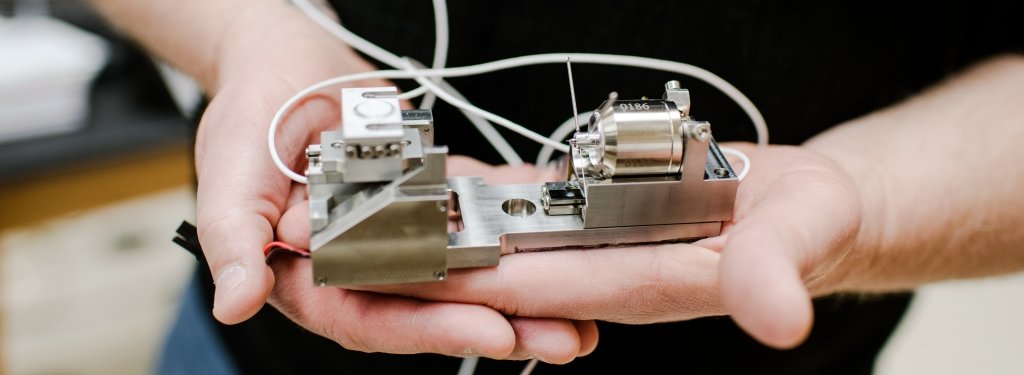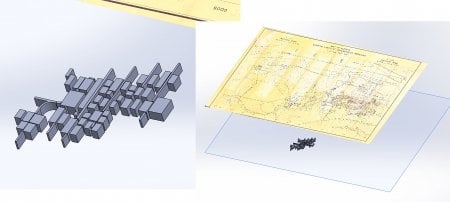Carbon Foam: The Key Ingredient of a Better Battery?

A lighter, greener, cheaper, longer-lasting battery. Who wouldn’t want that?
Researchers at Michigan Technological University are working on it. Actually, their design is a twist on what’s called an asymmetric capacitor, a new type of electrical storage device that’s half capacitor, half battery. It may be a marriage made in heaven.
Capacitors store an electrical charge physically and have important advantages: they are lightweight and can be recharged (and discharged) rapidly and almost indefinitely. Plus, they generate very little heat, an important issue for electronic devices. However, they can only make use of about half of their stored charge.
Batteries, on the other hand, store electrical energy chemically and can release it over longer periods at a steady voltage. And they can usually store more energy than a capacitor. But batteries are heavy and take time to charge up, and even the best can’t be recharged forever.
Enter asymmetric capacitors, which bring together the best of both worlds. On the capacitor side, energy is stored by electrolyte ions that are physically attracted to the charged surface of a carbon anode. Combined with a battery-style cathode, this design delivers nearly double the energy of a standard capacitor.
Now, Michigan Tech researchers have incorporated a novel material on the battery side to make an even better asymmetric capacitor.
Their cathode relies on nickel oxyhydroxide, the same material used in rechargeable nickel-cadmium or nickel-metal hydride batteries. “In most batteries that contain nickel oxyhydroxide, metallic nickel serves as a mechanical support and a current collector,” said chemistry professor Bahne Cornilsen, who had been studying nickel electrodes for a number of years, initially with NASA support. A few years ago, the Michigan Tech team had a chance to experiment with something different: carbon foam. He suggested replacing the nickel with carbon foam.
Carbon foam has advantages over nickel. “It’s lighter and cheaper, so we thought maybe we could use it as a scaffold, filling its holes with nickel oxyhydroxide,” said Tony Rogers, associate professor of chemical engineering.
Carbon foam has a lot of holes to fill. “The carbon foam we are using has 72 percent porosity,” Rogers said. “That means 72 percent of its volume is empty space, so there's plenty of room for the nickel oxyhydroxide. The carbon foam could also be made of renewable biomass, and that’s attractive.”
But how many times can you recharge their novel asymmetric capacitor? Nobody knows; so far, they haven’t been able to wear it out. “We’ve achieved over 127,000 cycles,” Rogers said.
Other asymmetric capacitors have similar numbers, but none have the carbon-foam edge that could make them even more desirable to consumers.
“Being lighter would give it a real advantage in handheld power tools and consumer electronics,” said Rogers. Hybrid electric vehicles are another potential market, since an asymmetric capacitor can charge and discharge more rapidly than a normal battery, making it useful for regenerative braking.
The group has applied for a patent on their new technology. Chemical engineering professor Michael Mullins is also a member of the research team. Graduate students contributing to the project are PhD graduate Matthew Chye and PhD student Wen Nee Yeo of the chemical engineering department and MS student Padmanaban Sasthan Kuttipillai and PhD student Jinjin Wang of the chemistry department.
The research is funded by the US Department of Energy, and the Michigan Universities Commercialization Initiative, the Michigan Tech Research Excellence Fund and the Michigan Space Grant Consortium.
Michigan Technological University is an R1 public research university founded in 1885 in Houghton, and is home to nearly 7,500 students from more than 60 countries around the world. Consistently ranked among the best universities in the country for return on investment, Michigan's flagship technological university offers more than 185 undergraduate and graduate degree programs in science and technology, engineering, computing, forestry, business, health professions, humanities, mathematics, social sciences, and the arts. The rural campus is situated just miles from Lake Superior in Michigan's Upper Peninsula, offering year-round opportunities for outdoor adventure.




Comments